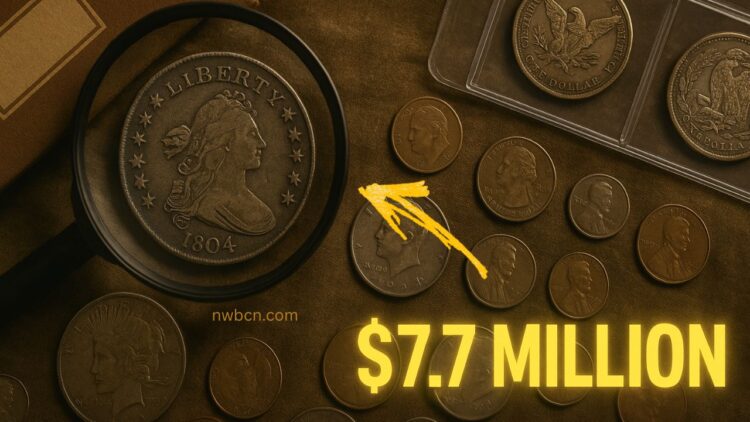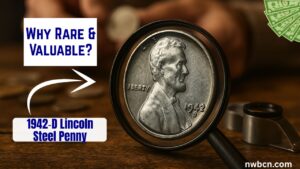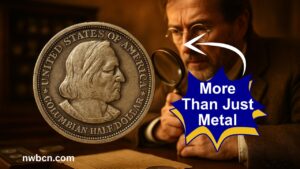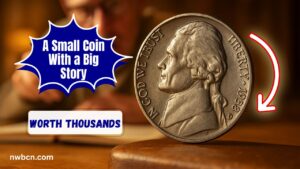The 1804 Draped Bust Dollar stands as one of the most legendary coins in American numismatic history. Despite bearing the year “1804,” these coins were not minted in that year.
Their historical mystique, extreme rarity, and pristine condition have made them highly sought after by collectors, fetching prices as high as $7.7 million.
In this article, we uncover every detail, classification, and market insight into why this coin reigns supreme among U.S. coins.
Historical Background
The Draped Bust silver dollar series was produced from 1795 to 1803. According to Mint records, over 19,000 silver dollars were reportedly minted in 1804, but these were most likely dated 1803. The practice of using leftover dies from previous years was common.
In 1834, the U.S. Department of State commissioned special proof coin sets to be presented as diplomatic gifts to Asian rulers.
Mistakenly believing that the last dollar was issued in 1804, Mint officials created new dies and struck a small batch of “1804” Draped Bust Dollars, which had in fact never existed prior. Thus began the legend of the 1804 dollar.
Classifications of the 1804 Dollar
Numismatists classify the 1804 dollar into three distinct classes based on the date and circumstances of their minting:
| Class | Date Struck | Quantity Known | Key Features |
|---|---|---|---|
| Class I | 1834–1835 | 8 | Minted as diplomatic gifts with original dies |
| Class II | Circa 1858 | 1 | Unauthorized restrike, unique specimen |
| Class III | 1859–1860 | 6 | Later restrikes, made for collectors |
Specifications of the 1804 Draped Bust Dollar
- Designer: Gilbert Stuart (design), Robert Scot (engraving)
- Metal Composition: 90% silver, 10% copper
- Weight: Approximately 27 grams
- Diameter: 40 mm
- Edge: Lettered – “HUNDRED CENTS ONE DOLLAR OR UNIT”
- Obverse Design: Liberty with flowing hair, draped bust
- Reverse Design: Heraldic eagle with shield and 13 stars
These specifications align with the broader Draped Bust dollar series.
Surviving Specimens and Rarity
Only 15 confirmed 1804 Draped Bust Dollars are known to exist today, making it one of the rarest U.S. coins:
- 8 Class I coins
- 1 Class II coin (resides in the Smithsonian Institution)
- 6 Class III coins
Each coin is meticulously documented in numismatic records, and most are in museum collections or high-profile private holdings.
Notable Sales and Provenance
Over time, several of these coins have been auctioned, with dramatic results:
- 1999: The finest known Class I specimen (Sultan of Muscat example) sold for $4.14 million, setting a world record at the time.
- 2008: Another Class I dollar fetched $3.74 million.
- 2009: A Class III coin sold for $2.3 million.
- 2020: A different Class I example sold for $1.44 million, despite economic uncertainty.
- 2021: The Sultan of Muscat specimen resold for a record-breaking $7.68 million, the highest price ever paid for an 1804 dollar and the second-highest for any U.S. silver coin.
Why the 1804 Dollar Is So Valuable
Collectors are willing to pay millions for the 1804 Draped Bust Dollar for several key reasons:
- Extremely Low Supply: With only 15 authenticated examples known, demand heavily outweighs availability.
- Unique Historical Backstory: The coin was never supposed to exist in the form it does—a result of a diplomatic blunder and a curious twist of numismatic history.
- Impeccable Condition: Many existing examples are in Proof condition, with some graded as high as Proof-68.
- Elite Provenance: Coins previously owned by royalty, diplomats, or elite collectors often command premium prices.
- Cultural Prestige: Owning an 1804 dollar is considered a pinnacle in numismatic circles—akin to owning a Mona Lisa in the art world.
- Investment Security: Rare coins, especially those with global renown, tend to appreciate or at least hold value during market fluctuations.
2021 Record Sale: A Closer Look
In August 2021, Stack’s Bowers Galleries sold the Sultan of Muscat specimen for $7.68 million. This coin was graded Proof-68 by PCGS, the highest known for this class.
This sale marked a pivotal moment in the coin’s market history, surpassing previous records and reaffirming its status as a crown jewel of American numismatics.
Estimated Market Value Trends Over Time
| Year | Sale Price (USD) | Coin Type |
|---|---|---|
| 1885 | $1,000 | Early auction |
| 1960s–1970s | $30,000–$70,000 | Class III |
| 1999 | $4.14 million | Class I (Proof-68) |
| 2008 | $3.74 million | Class I |
| 2009 | $2.3 million | Class III |
| 2020 | $1.44 million | Class I |
| 2021 | $7.68 million | Class I (Proof-68) |
How to Buy or Verify an 1804 Dollar
Acquiring an authentic 1804 dollar is a monumental task. Here’s what prospective buyers should know:
- Only deal with major auction houses or high-tier numismatic brokers.
- Demand professional certification from leading grading services like PCGS or NGC.
- Expect prices between $1 million to over $7 million, depending on class and condition.
- Beware of counterfeits, as reproductions and fakes are rampant online.
Authentication Tips
To ensure authenticity, collectors should look for:
- Lettered edge details
- Die alignment and known die markers
- Certified holder from a reputable grading service
- Documented provenance and past sale history
Due to its notoriety, the 1804 dollar is one of the most forged coins in the U.S. market, making proper verification essential.
Summary Table of Key Information
| Feature | Details |
|---|---|
| Year on coin | 1804 |
| Actual minting period | 1834–1860 (across all classes) |
| Known specimens | 15 total (Class I: 8, II: 1, III: 6) |
| Composition | 90% silver, 10% copper |
| Diameter | 40 mm |
| Weight | Approx. 27 grams |
| Edge | Lettered |
| Highest sale price | $7.68 million (2021) |
| Most famous specimen | Sultan of Muscat |
| Nickname | “King of American Coins” |
The 1804 Draped Bust Dollar is more than just a coin—it’s a symbol of rarity, prestige, and American history. With only 15 known pieces and a rich backstory involving diplomacy, errors, and elite ownership, it captures the imagination of collectors and investors alike.
The coin’s market value—peaking at $7.68 million—reflects not just its scarcity, but its undeniable cultural and historical appeal.
Whether you’re a seasoned numismatist or a curious historian, the 1804 dollar serves as a powerful reminder of how even a small coin can hold enormous value, both financially and historically.
FAQs
Q1. Why does the 1804 dollar have such a high value?
Its limited mintage, rich diplomatic history, high collector demand, and elite provenance make it a prized possession. Condition also plays a major role, with top-graded examples commanding millions.
Q2. Are there any genuine 1804 dollars in circulation?
No. All genuine 1804 dollars are well documented and exist in private collections or museums. Any “1804 dollar” found in pocket change is almost certainly a replica or counterfeit.
Q3. Can I buy an 1804 Draped Bust Dollar today?
Yes, but only through prestigious auction houses or rare coin dealers. Expect to pay anywhere from $1 million to over $7 million, depending on class and condition.




